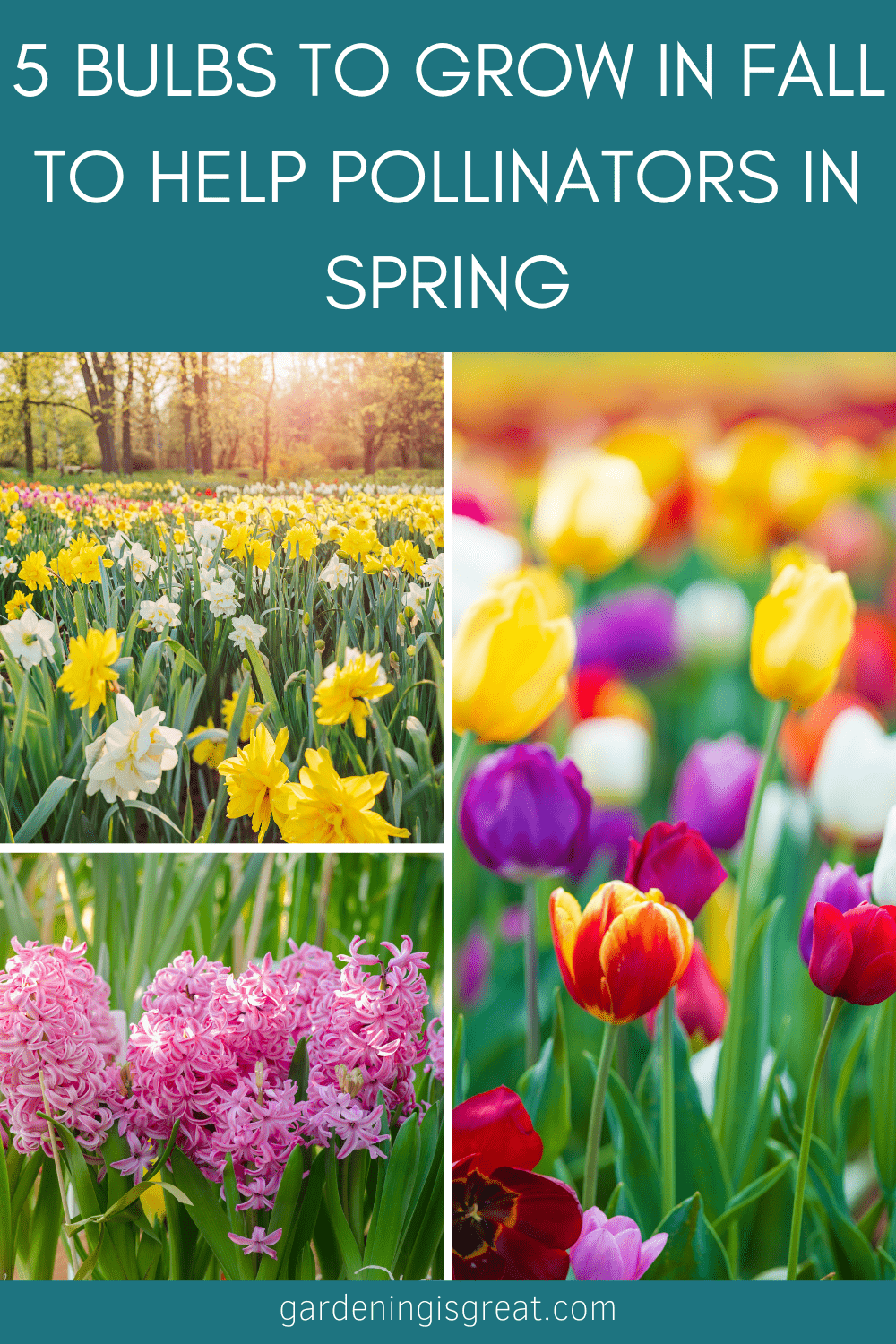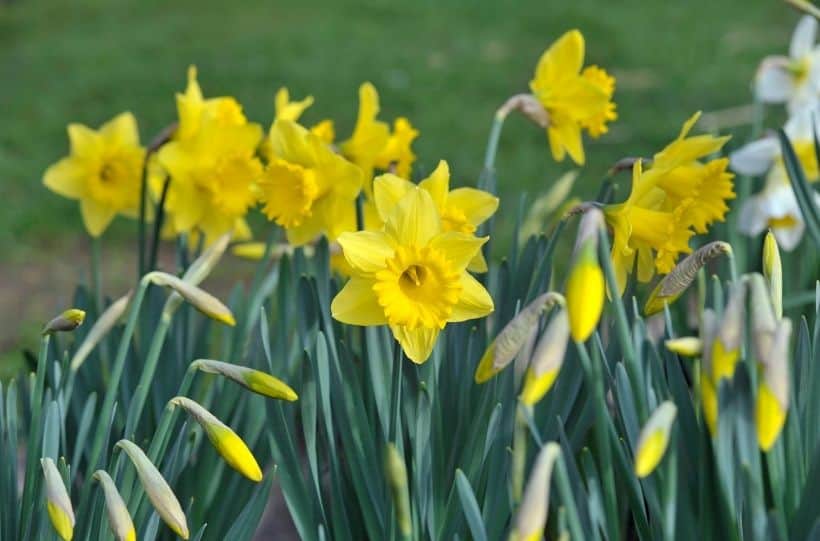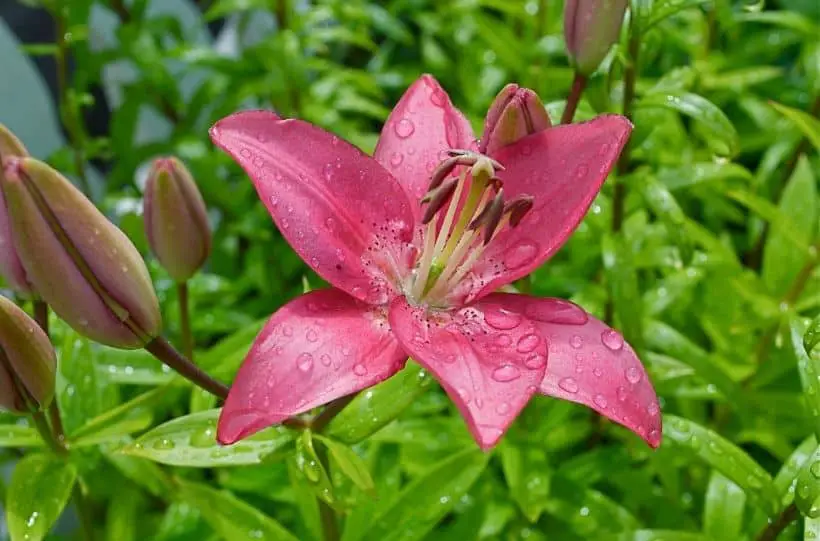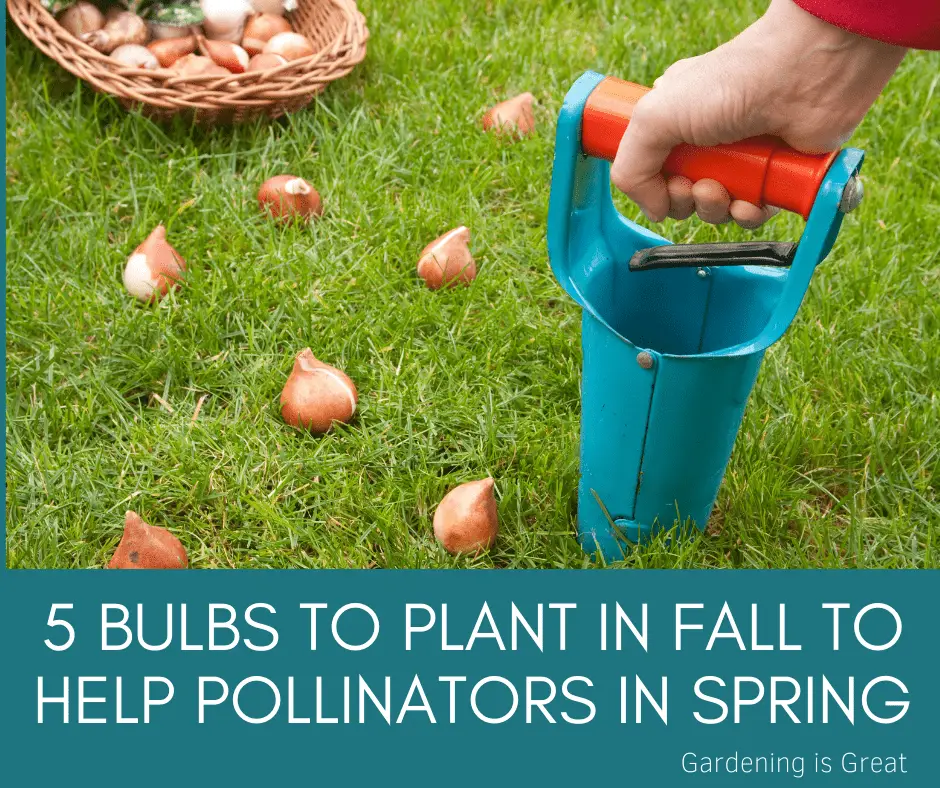5 Bulbs to Plant in Fall to Help Pollinators in Spring
This post may contain affiliate links. Please see the privacy policy for details.
As the cooler weather sets in, pollinators either come to the end of their life or find a safe spot to hibernate before spring.
Pollinators such as bees and butterflies have a short lifespan during the spring and summer months. But they play a crucial role in helping to spread pollen and fertilizing flowers and crops. An incredibly 35% of the world’s crops are fertilized by pollinators.
For us gardeners, we need to do what we can to provide a safe, inviting, and nectar-rich garden to support pollinators. Sadly, pollinators are facing a substantial decline in numbers due to habitat loss, chemical fertilizers, and several other challenges.
One way we can support pollinator numbers in spring is to grow a range of flowers. Early in spring, food sources are still relatively scarce for pollinators. Bulbs are an ideal option to plant in the fall as they can hibernate through the winter.
This post covers 5 bulbs to plant in the fall that are all beneficial to helping pollinators survive in spring.

But before we dive into the different types of bulbs, here are some top tips for planting them:
- Plant before the first frost
Ensure to plant each bulb before the first frost sets in. Bulbs initially focus their growth on their roots.
Planting before the first frost ensures the ground is not too hard and cold for them to start. Once the frost has finished, the bulbs can continue growing into flowers in early spring.
- Improve soil drainage
During the winter, the ground can become cold and water-logged. Bulbs can become rotten if left in soaking wet soil.
To minimize the chance of this, loosen the soil with a fork where you want to plant your bulbs. Add some compost to provide the bulbs with a good head start along with some sand to improve drainage.
- Choose a range
Not all bulbs will grow at the same time throughout Spring. To ensure a consistent supply of food for pollinators, try to select a range of bulbs that will flower at different times from early spring to the beginning of summer.
After preparing the ground and knowing when to plant, here are 5 bulbs to plant in fall that will flower throughout spring:
Daffodils
When you think of bulbs you automatically think of daffodils. They are the classic spring-time flower with beautiful yellow and/or white trumpet-shaped flowers.

Daffodils thrive in full sunlight, so do make sure to consider where the sun faces in your garden in spring.
They do well grown directly in the ground or containers as long as they are planted in well-drained soil.
When planting daffodil bulbs, ensure to make a hole twice as deep as the bulb itself. Water over the top so that the ground is moist but not sodden. Bulbs also need to be positioned at least two bulb-widths apart.
The prime time to plant bulbs is between September and early November. Daffodils, depending upon the variety planted, will flower between February and May.
Tulips
Tulips make a stunning addition to any garden in spring due to their bold and bright colors. Similar to daffodils, tulips prefer to be planted in full sun and sheltered from the wind.

Their bulbs can be planted between October and November and need to be planted with a depth of at least two bulbs. You can expect tulips to flower between March and May.
Unlike daffodils which can return the following year, tulips are best dug up and discarded. Tulips are prone to disease and rotting and do not re-flower for a second year.
Lilies
Lilies make an excellent combination when planted with tulips or daffodils as they flower a lot later in the season.
Lilies are often planted between October and the following April, and flower between June and August. They are highly fragrant with huge leaves and provide an excellent supply of nectar for pollinators.

If you are choosing to plant lilies, select an area that is sheltered but sunny. Lilies also prefer more acidic soil. If your garden soil is not acidic, you could either mix in multi-purpose compost or, plant your lilies separately in containers.
Lilies need extra protection to survive the winter frost. When planting, they require a minimum of 12cm of soil on top of each bulb and at least three bulbs length apart from one another.
Hyacinths
These flowers are stunning and instead of providing one large flower from each bulb, each plant is made up of an oblong of small, brightly colored flowers.
Hyacinths are ideal bulbs to plant in the fall to help pollinators in spring due to the nectar being easy to access and they flower early in the season providing vital food.
Their bulbs are best planted between September and November in an area with full sunlight. Bulbs require protection from the frost so need to be planted at least 10cm deep. Each bulb should be 8cm apart to provide enough space for root growth without competition for nutrients.
You can expect your hyacinths to flower anywhere between December and April. If you leave the bulbs in the ground they will re-flower the following year.
Alliums
Alliums are a firm favorite flower for bees and butterflies. Growing on long stems, each tip reveals a sphere head of small, purple flowers which offer an excellent source of food for pollinators.
This plant is best planted in full sunlight in a sheltered area of your garden. Alliums are best planted between October and November. They need to be planted at least 15cm deep in the ground to protect them from the frost.
Alliums flower between May and June and will re-grow year after year. Taller varieties may require support to help stabilize them, especially if grown in an open area.

Each of these 5 bulbs compliments one another offering food for pollinators from as early as January to August. They are vibrant and range in colors to enhance the appearance and aroma of your garden.
For more colorful inspiration for your garden, take a look at these posts:
